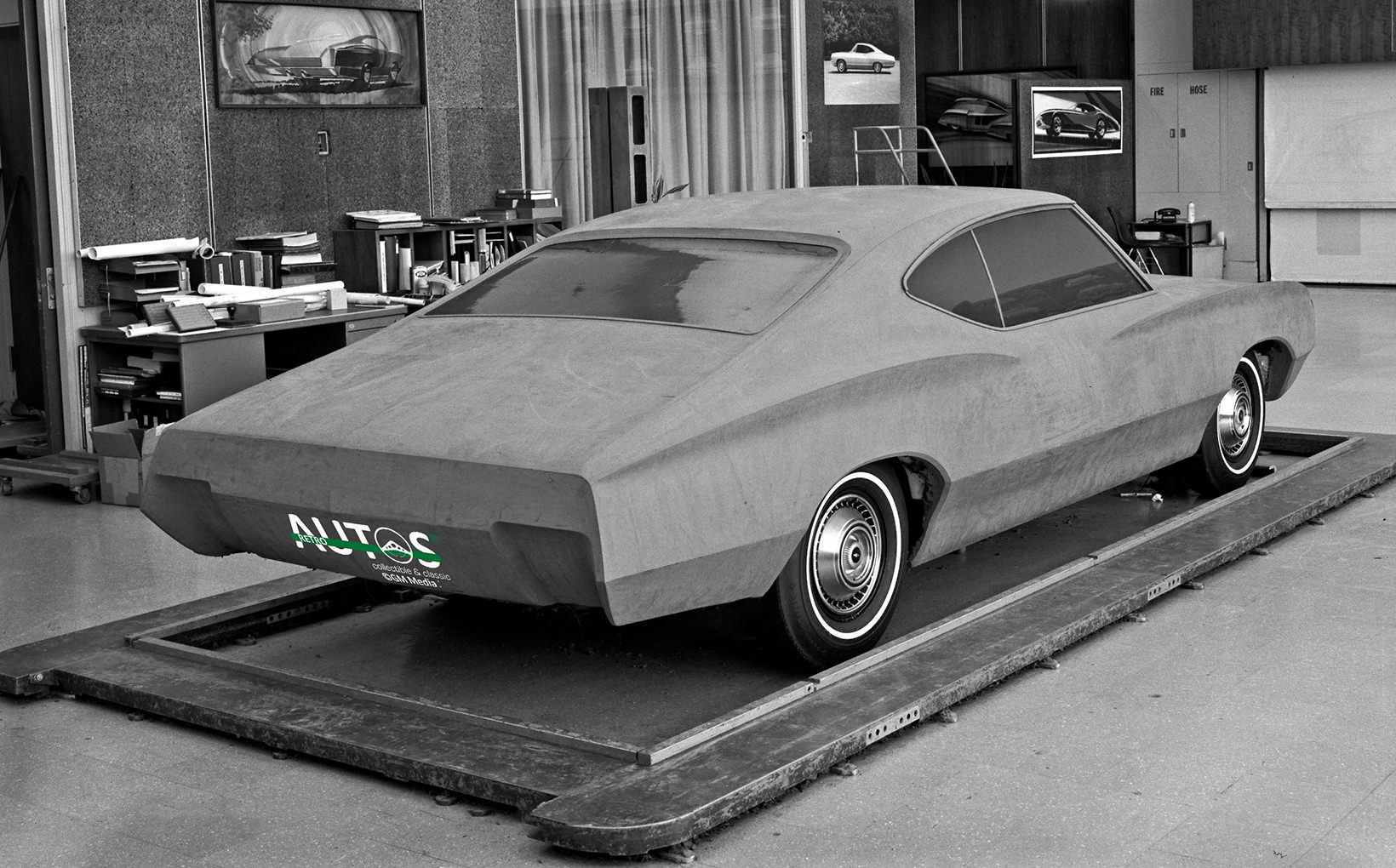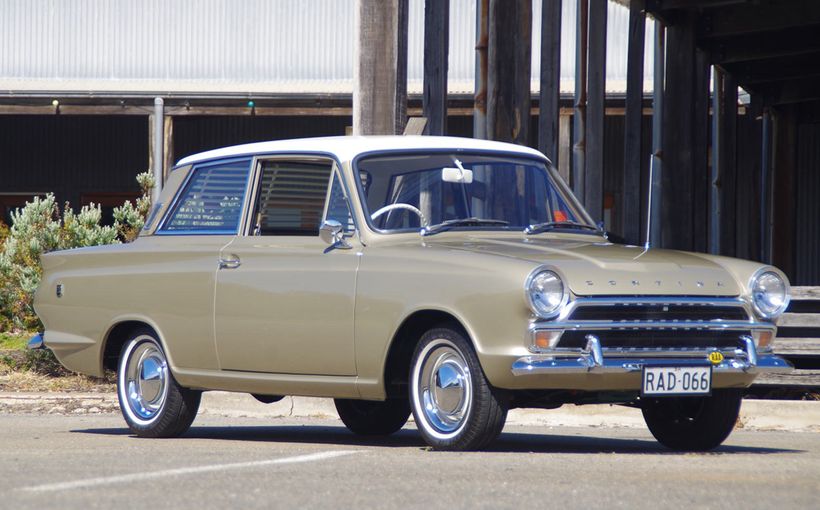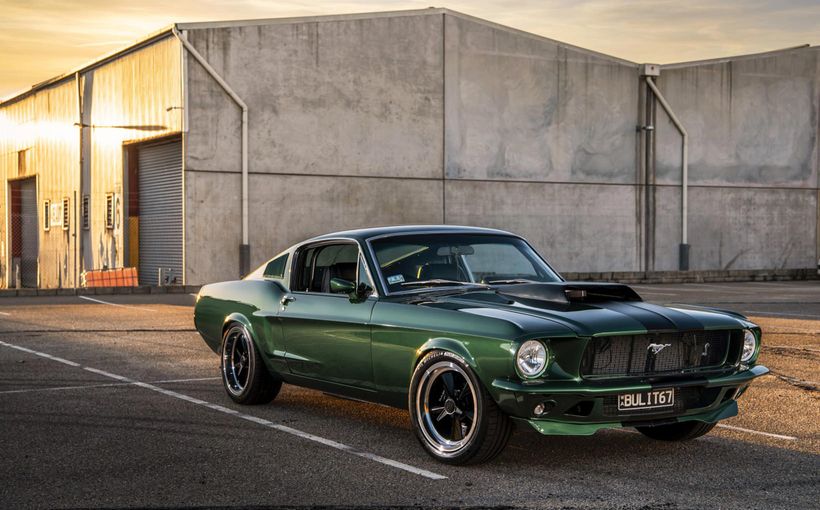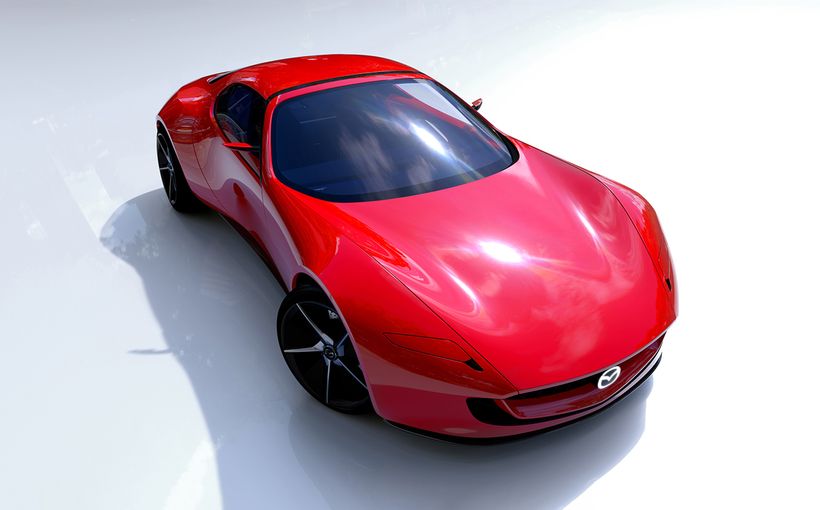Revealed! Secret designs that never made it

For every car that transitions from design to driveway, there are many styling proposals that never make it beyond the high security doors of the design studios.
From the files at Retroautos, I’ve assembled a collection of rejected design proposals. Some make me wonder why they were not used, such as AMC’s Rogue coupe and the PA Vauxhall flat roof sedan. Both have appealing shapes. Others, such as the early ideas for the 1993 Camaro/Firebird, have me asking “what were they thinking?!!”
I do not envy those car company executives who must make the final choice of what goes into production and what remains hidden from the public’s gaze. Billions of dollars ride on those decisions. Back in the day when frequent styling updates were common, any mistakes could be fixed at the next facelift, sometimes within 12 months. These days, however, with the cost of developing a new model being so expensive, car companies are stuck with a shape for years. Quick changes to the sheet metal are no longer an option. An error of judgement has significant long-term consequences.
So, what’s your opinion of these secret designs that never made it?
FF and FG Holden

The FG was meant to supersede the FJ in 1954. The FF was planned for release in 1955 as a successor to the FG. Both were insurance, in case the FJ’s sales started to decline and Holden needed something to entice car buyers into dealerships. The cars were also meant to bridge the styling gap between the very 1940’s 48-215/FJ body and the upcoming 1956 FE model. As we know, neither model was required. That’s good, because the FF and FG were not an improvement over the FJ. You can read more about these never seen Holdens in previous editions of Retroautos. Links at the end.
Small 1950s Mercedes

In the mid-1950s Mercedes evaluated a six-seater that was smaller than the “ponton” W180. It was developed into this full-sized mock up, with an interior. But went no further. I reckon it was a good idea.


1968 AMC Javelin

Always able to do more with almost no money, American Motors design boss, Dick Teague, set his sights on the Mustang with this Rogue coupe for 1968. It went through several design variations until it was released as the 1968 Javelin. I like the Rogue as much as I like the Javelin, which is one of my 1960s all-time favourites.


Another small Mercedes

When Mercedes realised that BMW were about to release their “Neue Klasse” models in late 1961, this strange looking proposal was developed. It is two sided and has a full interior. Mercedes would wait until the 1980s to counter BMW’s compact sporty cars.


1959 PA Vauxhall Velox/Cresta


An excellent flat roof interpretation for the PA Vauxhall. It was proposed as the 1959 update. Shame it was rejected in favour of a variation of the existing wrapped rear window. But here’s something. Imagine if Chevrolet had sold the flat top Vauxhall as a compact Chevrolet, instead of the Corvair? That would have saved GM the hundreds of millions of dollars they spent developing a car with no future. And they could have had the flat top PA in the market a year or two before the Falcon and Valiant. No need for the Chevy II/Nova either. So many opportunities lost.


1979 Ford Mustang



“Thou shalt not have sloping front ends”. That is what Henry Ford II is supposed to have decreed. Anyway, Ford’s design boss of the USA Jack Telnack campaigned for the 1979 Mustang to have a more fuel efficient, angled front end. And he succeeded. But not before his design team had to create many variations of the Mustang with blunt fronts. Even a Mustang wagon was considered. The sloping grille, which cost very little to implement, improved fuel economy by up to 10%. That saved the billion dollars Ford’s engineers were planning to spend on improving engine efficiency aimed at the same gain.


2005 Mercedes S class W221


These classy and fascinating 3/8 scale models are the finalists for the W221 S class sedan. My favourite is marked with a yellow circle. The production car is identified with a green circle. The front-end designs demonstrate how small changes to lights and grilles make big visual differences.


1959 Cadillac Eldorado Brougham by Pininfarina


Styled by David Holls and Charles Jordan in the Cadillac design studio, and hand built by Pininfarina in Italy, the Eldorado Brougham was GM’s most expensive car in 1959 and 1960. At $US13,000, the long low limousine was three times the price of a regular Cadillac. Its design predicted the 1961 models. Only 200 were built. When these images were taken in January 1958, the rear fenders were finless. But a Cadillac must have its fins. By March 1958, fins had been applied. I prefer this Eldo finless.

1968 Chevelle


The Chevelle body was all new for 1968. I’ve never warmed to the reversed angled rear side window. It left too much uninteresting sheet metal above the rear wheel. The original proposals, developed in 1965, featured convoluted creases along the side of the car. It is a good thing they were vetoed. The creases did make it onto the 1967/68 full sized Chevrolet.


1964 Opel Kapitain/Admiral/Diplomat


Look away now! Please shield your eyes from what the Opel design team presented for the 1964 Kapitan. Bill Mitchell, GM’s design supremo, did not like it either. He told Don Lasky and Leo Pruneau to create an alternative. A great job they did, too. Meanwhile, Mitchell decided to promote Chevrolet’s design director, Clare MacKichan, to lead Opel’s styling efforts. That ensured Opel’s styling was aligned with GM’s global design themes. There is a comprehensive story on the 1964 Opel Kapitan design history in a previous Retroautos. A link is at the end.

Late ‘50s Chrysler station wagons


Chrysler design vice president, Virgil Exner certainly encouraged “out there” design ideas. How about these station wagon 3/8 scale proposals for the 1957-59 models? Portholes instead of windows? And check out the fins that start at the head lights and end at the tail lights! Mind you, the production wagons were not too far removed from Exner’s winged road warrior ideas.

1961 Chevrolet


GM’s 1961 full sized range was the first time Bill Mitchell’s overall styling influence could be seen across the company. Smaller and with significantly less chrome than their predecessors, the ’61 hardtop sedans were initially meant to have a flat top roof, a carryover from 1959 and 1960. But that idea was jettisoned in favour of a more formal roof line. The flat top was given to the pillared sedans. These images of the Chevrolet are dated 20th January, 1959. The production hardtops are graceful and elegant.


1968 Chevrolet Caprice coupe


Chevrolet’s stylists developed this eye-catching wrap around back window and a “boat tail’ rear end, which can be seen in the tape drawings on the wall, for the 1968 Caprice coupe. Unfortunately, the ideas were rejected in favour of a more formal roof shape.


1964 Plymouth Barracuda


Chrysler was first to break out of the pony car corral with the launch of the Plymouth Barracuda on 1st April, 1964, sixteen days before the Mustang. From the windscreen back it was all new. That gigantic rear window was a stunner and was expensive to productionise. To save money, the front end was lifted off the el cheapo Valiant. Trouble was, in potential buyers’ minds, using the Valiant’s front end linked it directly to the economy car. Ford was smarter. They spent their money on new sheet metal for the Mustang to hide its Falcon’s origins. Maybe if Chrysler had spent more money on re-styling the front, and kept the rear window at the smaller size you see here, the car might have enjoyed more success.


1993 Camaro

GM’s 4th generation Camaro/Firebird path from design to driveway was troubled. The driveline switched from rear wheel drive to front wheel drive and back again. There was a strong push to downsize the car and it was almost cancelled. Here are two of the early design ideas and the result. The 4th generation Camaro/Firebird does not appeal to me much, but it is a darn sight better than these weirdly shaped proposals.


No doubt about it, there are some great designs that have never made it onto the street. And there are others that we should applaud whoever made the decision to reject them!
Here are the links I mentioned: Opel Kapitan, FF Holden and FG Holden
Retroautos is written and published with passion and with pride by David Burrell. Retroautos stories and images are copyrighted. Reproducing them in any format is prohibited. Retroautos is a registered trademark. Reproducing it in any format is prohibited.









